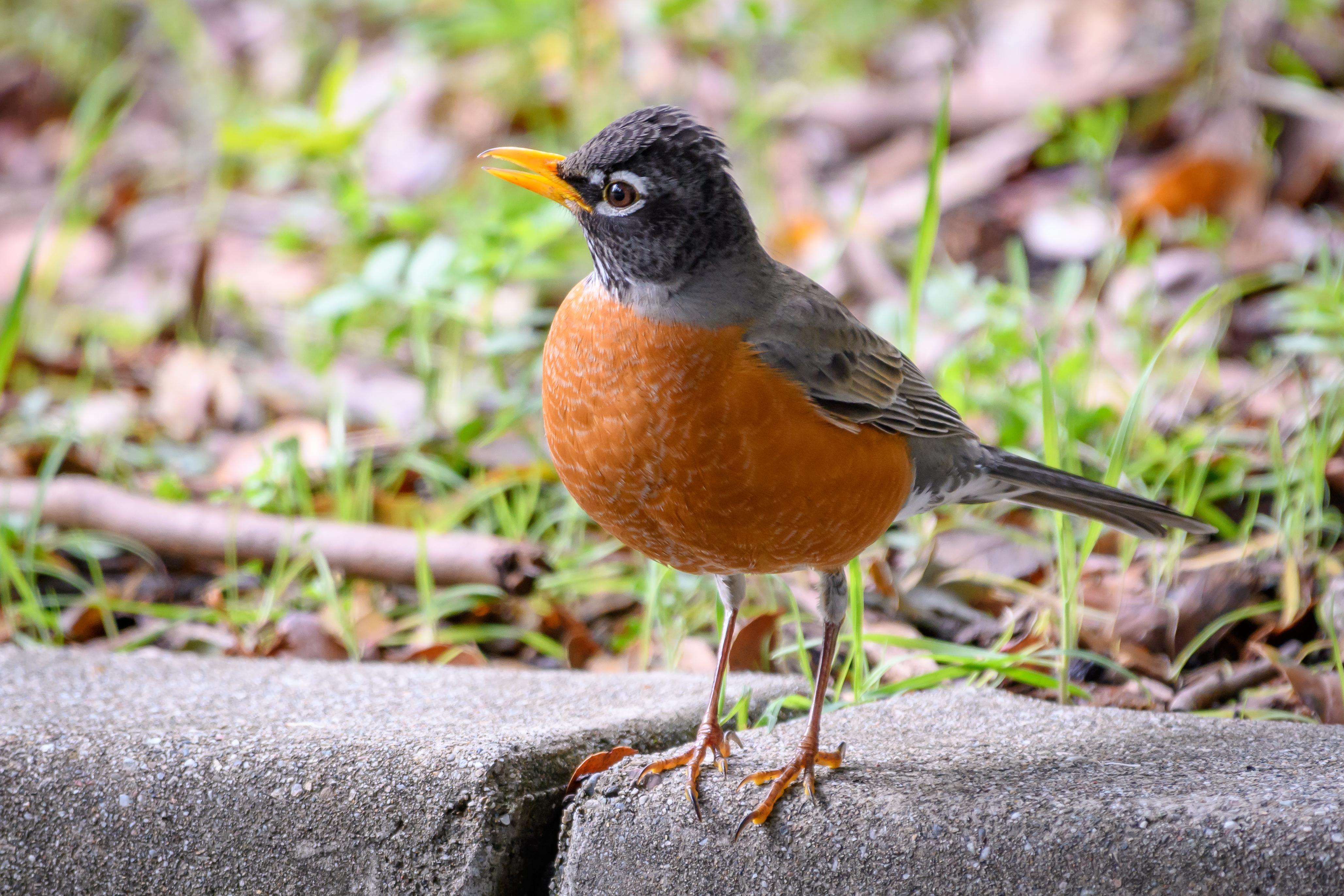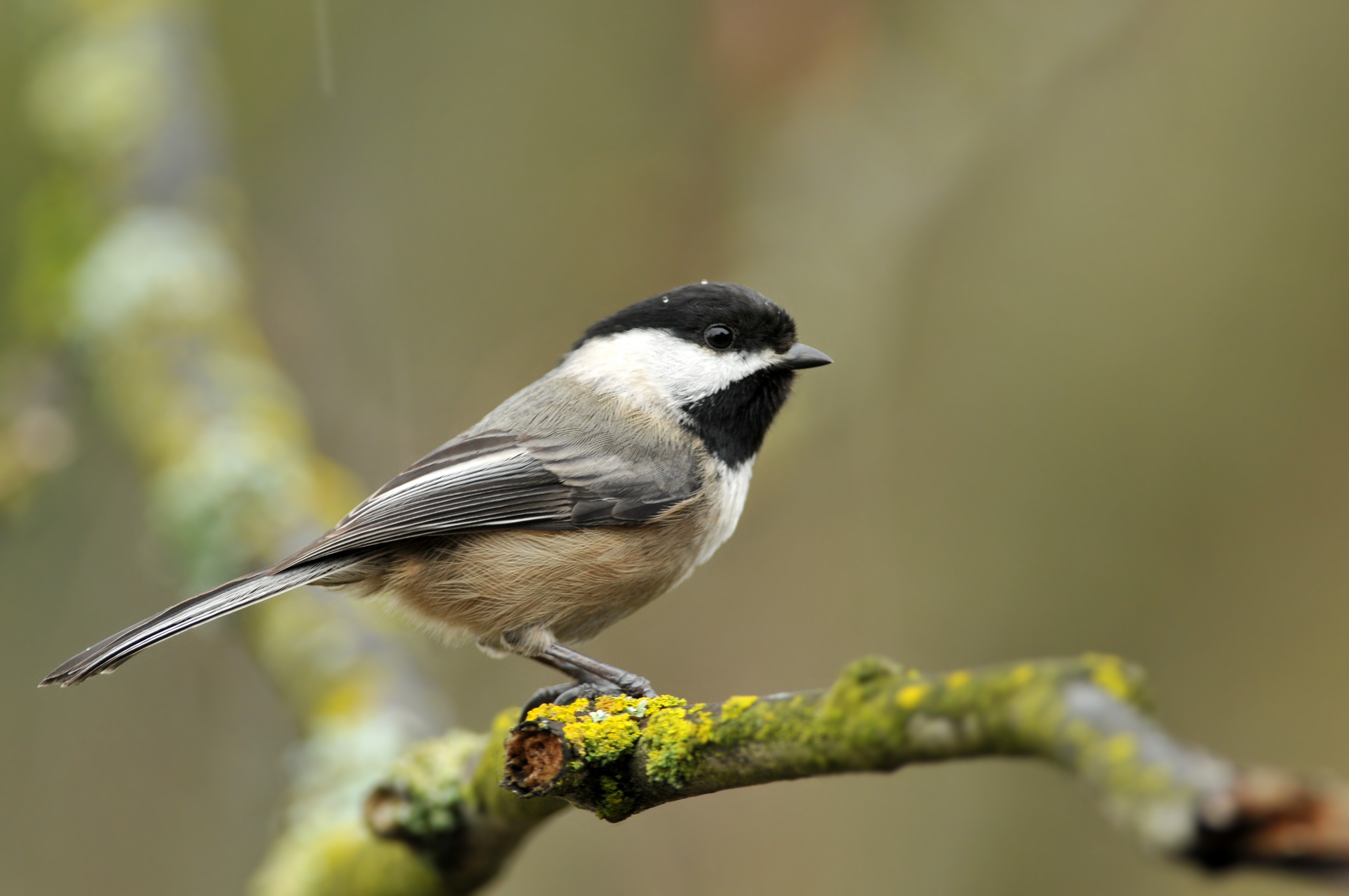Backyard Birds
Birds create wonderful natural music, and they come in so many shapes and sizes! Here are some common birds found in North America that you have probably seen in your backyard.
American Robin

The American robin is part of a family of birds called thrushes. The American robin is native to North America: that means they live there naturally. You can recognize robins by their orange bellies and their early-morning worm-eating habits. As you’ve probably heard, “the early bird gets the worm!” Funnily enough, a group of robins is called a “worm!”
Preferred habitat: Where do they live?
Robins like to live near gardens, open woodlands, and farming areas.
How to attract: How can I invite them to my yard?
You can hang a bird feeder with mealworms (a tasty treat for robins!), or you can set aside an area of your yard where a robin’s favorite foods can thrive. Robins love snacking on berries and little bugs like caterpillars, worms, termites, and grasshoppers.
American Goldfinch

The American goldfinch is a beautiful little bird that adds an extra cute ray of sunshine to your backyard. Their bright yellow plumage (that means feathers!) will change to brown in the winter, then back to yellow in the spring and summer.
Preferred habitat: Goldfinches like fields with wildflowers, open floodplains, areas overgrown with weeds, and bushy thickets.
How to attract: In your yard, hang a tube bird feeder filled with nyjer seeds. Goldfinches enjoy this type of thistle seed.
Bald Eagle

The bald eagle has been the United States’s official national bird since 1782. They grow their trademark white feathers on their heads after reaching adulthood. In the 1950s, there were only 412 nesting pairs of bald eagles left in America, and in 1978, they were listed as an endangered species. However, they have made a miraculous recovery and now you can see them flying through the skies in many parts of America!
Preferred habitat: Bald eagles like farmlands, lakes, rivers, and ponds. They usually nest near water.
How to attract: Bald eagles don’t often visit backyards, so the best way to see one is to take a trip to a nearby campground or lake, or a zoo or sanctuary.
Rock Pigeon

Rock pigeons are actually an invasive species: that means that they aren’t native to North America. They were brought over from Europe!
A little-known fact is that pigeons and doves are actually the same thing. Since they live in countries all over the world, there are many different names for them. “Pigeon” and “dove” are just the two that happen be the most common in the English language!
Preferred habitat: Pigeons often live in structures humans have built, especially ones with nooks and crannies, which are perfect for pigeons to make nests and find shelter. Pigeons are common everywhere from cramped cities to wide-open countryside.
How to attract: Just provide shelter for them, like a birdhouse, and small fruits and seeds for food!
American Crow

Crows are incredibly smart birds who can learn, use tools, and solve problems! These dark-colored birds can even mimic human speech, especially if they’re raised by humans. They also love finding and collecting shiny objects. Crows often appear in folk tales and poetry because of their mischievous behavior and trademark dark plumage.
Preferred habitat: Crows enjoy partly-open habitats like farming country, fields, forest clearings, shorelines, and towns.
How to attract: Lay out some crow-friendly snacks in your yard, such as unsalted peanuts, corn and sunflower seeds, or even cat or dog food – crows will eat just about anything! It helps to have tall trees for crows to roost in, and to remove any noisy objects that might scare crows, like wind chimes.
Black-Capped Chickadee

This tiny bird’s call sounds like its name: “chick-a-dee-dee-dee!” There are many kinds of chickadees, but the black-capped chickadee is one of the most common. You can recognize them by their black caps and chins and their white cheeks. They are the state bird of Maine and Massachusetts!
Preferred habitat: Chickadees like to live in open woods, forest edges, parks, and backyards.
How to attract: Simply place a bird feeder with bird seed in your yard! Chickadees particularly enjoy sunflower seeds, peanuts, and suet made for birds. Suet it a protein-filled treat you can get at a bird feed store, or at a farming and pet supply store!
Downy Woodpecker

The downy woodpecker is the smallest woodpecker in North America. All woodpeckers, including this one, have a very strong brain case and extra muscles behind their beaks, so the impact of smashing their beaks on trees to find food doesn’t damage their face or brain.
Preferred habitat: Downy woodpeckers enjoy most forested areas in lower elevations (that means not on mountains!). They love maple, oak, hickory, and beech trees.
How to attract: Downy woodpeckers usually look for food in trees. They may also be interested in food you can supply, like sunflower seeds, cracked corn, millet, or especially, suet made for birds!
If you like learning about common animals, check out this blog about backyard bugs.
